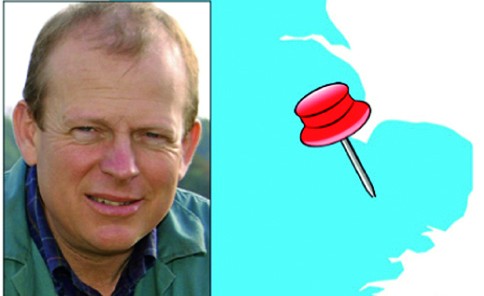Full-marks and many congratulations to anyone who won, became a finalist or even entered one of the recent awards ceremonies, including the National Pig Awards. You are truly great ambassadors for the industry and some of the stories behind the businesses are truly inspirational.
At our recent Eastern Region NPA meeting, the tidiness or otherwise of pig farms came up.
I am reminded of this when I gaze enviously at a neighbour’s recently moved herd, which has, as usual for them, gone onto grass stubble resulting from their grass seed crop. Grass cover adds considerably to the aesthetics of an outdoor pig unit as well as its environmental credentials.
Moving onto grass is a situation I’ve long aspired to in vain, as my landlord doesn’t grow grass seed and we have to squeeze into a crop rotation based on two years’ pigs, sugar beet, potatoes, onions, maize for biogas and then back to pigs.
A meeting for outdoor producers in the summer highlighted the risks we can pose to human drinking water quality and a resulting visit to our unit pointed out some remedial measures we could take.
One that grabbed my attention was the potential to undersow maize with grass, to help mitigate environmental problems with maize and leave a beautiful grass sward to move pigs onto after maize harvest.
There are, of course, a few obstacles.
Work in another river catchment in the West Midlands has designed a bespoke seed drill after limited success with more readily available machines. Sorting how this can be made, paid for and finding a suitable contractor is not to be undertaken lightly.
Also, we – meaning the various crop tenants – tend to work in isolation of each other, each seeing our individual enterprise in isolation, rather than being part of a whole. This short-termism is degrading soils as no-one has a long-term interest in their preservation, only for the short years of their occupation.
Overcoming this by working together might lead to benefits for each of us as well as the wider environment.
The best time to drill under-sown grass in maize is a week after the last herbicide. And as my landlord has demonstrated their ability to kill their own sugar beet, I might fear for my grass if they go too near it with a sprayer. At least there is plenty of time before drilling in late May and with the help, encouragement and enthusiasm of Ed from the Norfolk Rivers Trust, we will get there.
We also have another problem with this site: one field drains on to a sandy track in very heavy rain and, in turn, dumps a deep layer of silt on a public road.
We’ve sought advice for design and siting of silt traps and bunds and there might even be some funding available, apparently.




